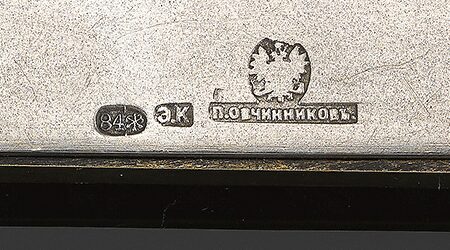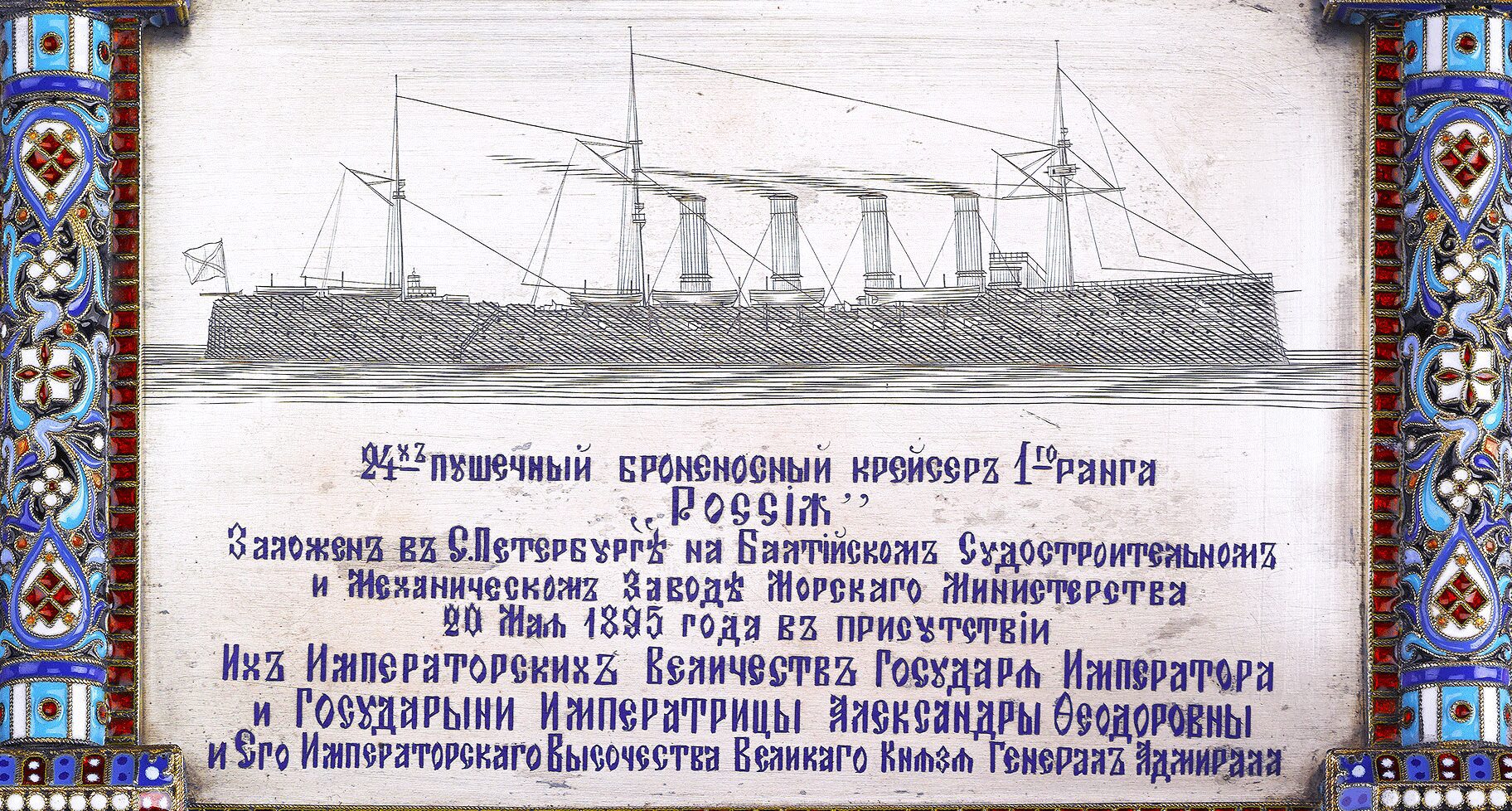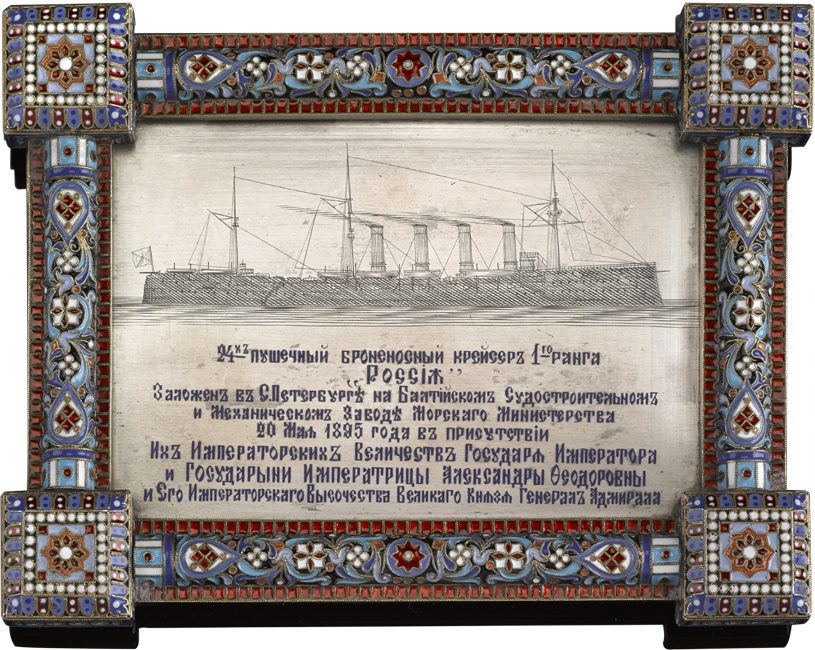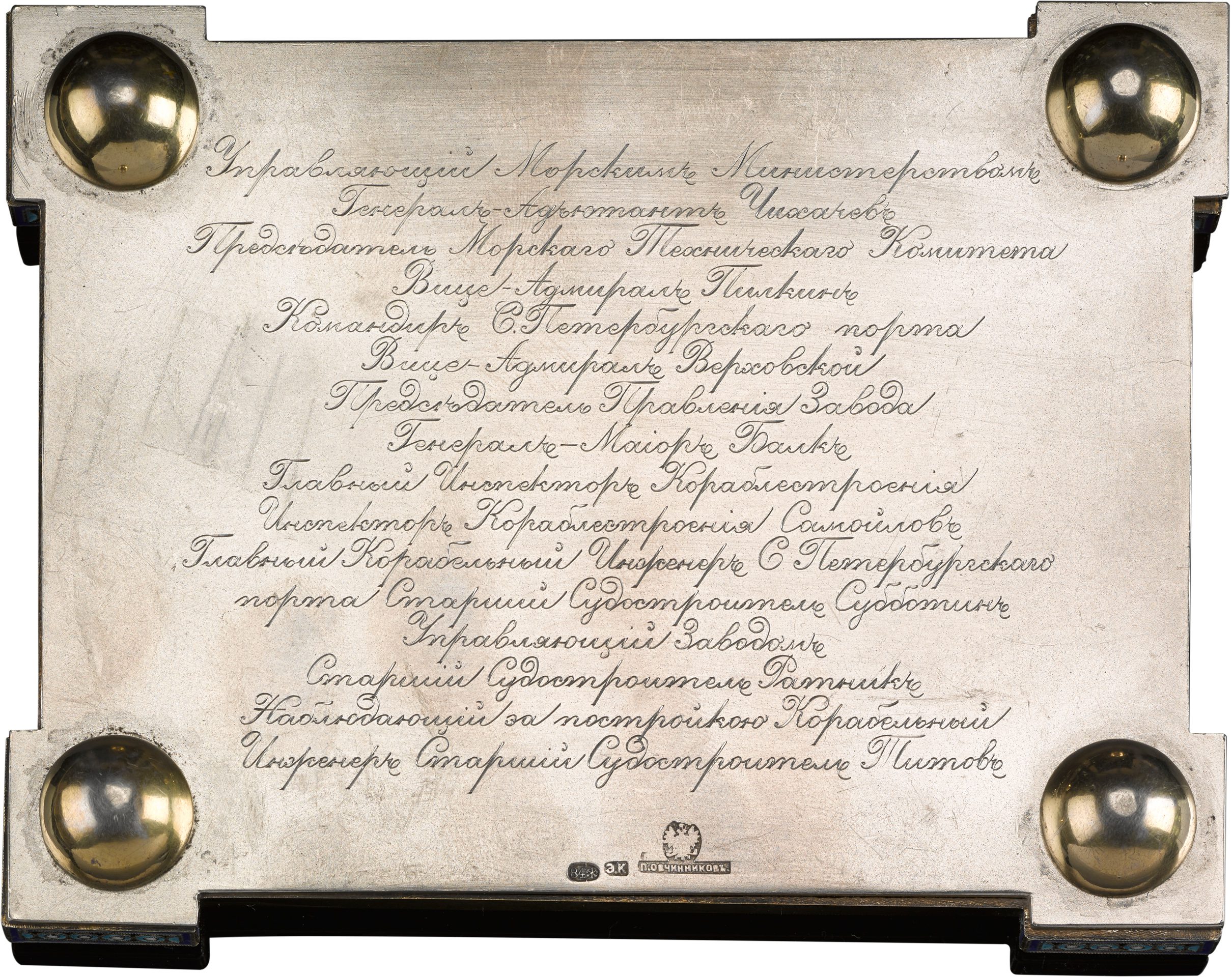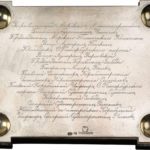Rectangular silver plaque engraved with the armoured cruiser ‘Rossiya’ below a Russian inscription in blue champlevé enamel within a silver-gilt and cloisonné enamel frame decorated with flowers in red, white, orange and three shades of blue on black ground edged with borders of foiled red rectangular motifs, with square corners, the silver back with Russian inscription, raised on four domed silver feet.
The enamel inscription on the obverse reads:- ‘24-gun armoured cruiser 1st Class ‘Rossiya’, its construction began in the St. Petersburg Baltic Works and the Mechanical Works Factory of the Maritime Ministry, 20th of May, 1895 in the presence of Their Imperial Majesties the Emperor, the Empress Alexandra Fedorovna and His Imperial Highness the Grand Duke General Admiral‘.
The reverse engraved with ‘Vice Admiral Chikhachev, Commander-in-Chief of the Maritime Ministry, Representative of the Pacific Maritime Committee, Vice-Admiral Pilkin, Commander of the port of St. Petersburg, Vice-Admiral Verkhovsky, Representative of the Board of the Factory, Major-General Balk, Inspector of Shipbuilding Samoilov, Acting Chief-Inspector of Shipbuilding, Chief Shipbuilding Engineer of port of St. Petersburg, Senior Shipbuilder Subbotin, Director of the Factory, Senior Shipbuilder Ratnik, Supervisor of Shipbuilding, Senior Shipbuilding Engineer Titov‘.
Such plaques were commemoratives of the beginning of the ship’s construction and were presented to dignitaries participating in the ceremony.
The Imperial Navy armoured cruiser ‘Rossiya’ was built in 1893 – 1895 and launched on 30th of April, 1896. She took part in the Review of the Fleet for Queen Victoria’s Diamond Jubilee held at Spithead in June, 1897. Based in Vladivostok at the time of the Russo-Japanese war of 1904/05, she served as a long-range commerce raider. Like the cruiser ‘Rurik’, she was part of the Pacific Squadron, and was damaged in the same battle in the Strait of Tsushima. Unlike ‘Rurik’, ‘Rossiya’ was repaired and returned to Kronstadt for a major refit. ‘Rossiya’ was then used to lay mines during World War 1. In 1915 she underwent a further upgrading of her armaments but played no further part in World War I as her crew joined the Bolshevik revolutionaries in 1917. She was then put decommissioned and scrapped in 1922.
Ovchinnikov, alongside with Fabergé, was one of the most important silver and goldsmiths of the nineteenth century Russia. The firm’s production was highly praised by many other European royal courts. Ovchinnikov was appointed the official purveyor to Tsar Alexander III, the Imperial Russian Court, King Victor Emmanuel II of Italy, Grand Duke Mikhail Nicholayevich and King Christian IX of Denmark. The firm’s work was featured in numerous exhibitions around the world and received several prestigious awards.
